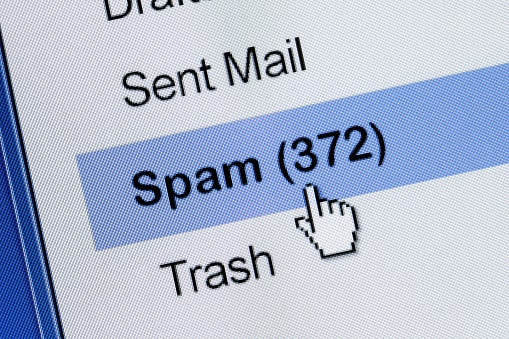By Ciara Noonan
Have you ever had to tell customers to check their spam folders when you mail them? Have your customers complained that they didn’t get an email that you know you sent? If so, you might have an email deliverability problem.
For businesses that depend on email, deliverability issues can be a real headache. ISPs and email inbox providers like Gmail aggressively filter spam, anything that looks like spam, and anything that comes from a source that is suspected of spamming.
Without a spam “immune system,” email would be unusable — think back to what email was like in the early years of this century. But the system is not perfect, and it’s all too easy for innocent businesses to get a bad reputation.
If your emails aren’t delivered or end up in spam folders, it’s likely one of the following is true.
- Your IP addresses or domains are on a spam block list.
- Email inbox providers think your IP or domain name is a source of spam.
- Your emails match spam-detection heuristics.
Let’s have a look at a few of the reasons your organization may have fallen foul of spam blocking systems.
You are sending spam
You might think this is a little obvious, but people have differing ideas of what constitutes spam. Take a look at the FTC’s Can-Spam Act guidelines and compare them to your email policies.
If you aren’t following the guidelines, then you may technically be spamming, even if that isn’t your intention.
Spam is being sent from your IP addresses
Spam may be being sent from your infrastructure without you being aware of it. It’s common for online criminals to compromise servers, content management systems, and eCommerce stores, infecting them with spam malware.
Following security best practices, such as updating the software on your server, will reduce the likelihood of your infrastructure being hacked.
If you share IP addresses with other organizations — as with a shared hosting account — perhaps they are sending spam.
Outbound spam filtering systems can alert you if spam is originating from within your network. If you have persistent email deliverability problems, I’d advise you to talk to your email host about outbound spam filtering.
Your email list is dirty
Are you sure that every address on your email list has opted-in and that the owner wants to receive your emails? When people classify messages as spam in email clients, inbox and block list providers find out about it and classify the sender as a spammer.
Organizations that handle email create spam traps to catch spammers. Spam traps are email accounts that aren’t used by a person or organization, but exist just to catch spammers — there is no legitimate reason for spam trap email addresses to be on a company’s email list.
Spammers scrape the web for email addresses, and they catch a few spam trap addresses in the process. An organization that buys a list of email addresses — or has a spam trap address maliciously submitted to their list — will quickly be marked as a spammer.
The best way to avoid email deliverability issues is to abide by the letter and spirit of anti-spam laws, to ensure that your network and infrastructure are secure, and to use an email or web hosting provider that implements outbound spam filtering.
Ciara Noonan works as a marketing specialist for MailChannels, a provider outbound email filtering and email delivery solutions for service providers. Follow MailChannels on Twitter at @MailChannels and check out their blog, http://blog.mailchannels.com/.







